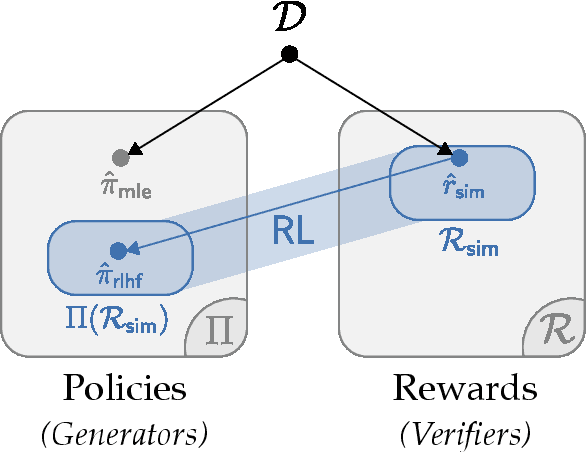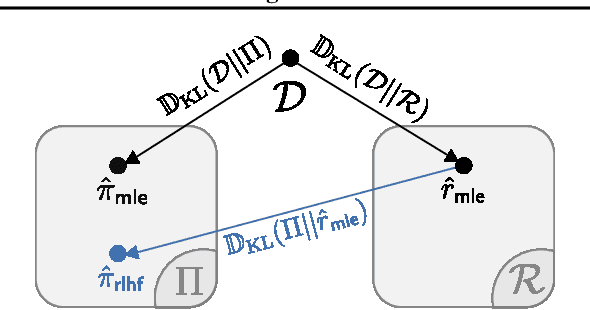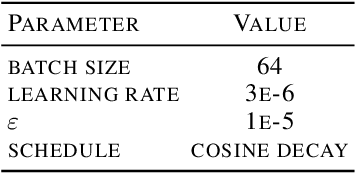Zhiwei Steven Wu
Persona-Augmented Benchmarking: Evaluating LLMs Across Diverse Writing Styles
Jul 29, 2025Abstract:Current benchmarks for evaluating Large Language Models (LLMs) often do not exhibit enough writing style diversity, with many adhering primarily to standardized conventions. Such benchmarks do not fully capture the rich variety of communication patterns exhibited by humans. Thus, it is possible that LLMs, which are optimized on these benchmarks, may demonstrate brittle performance when faced with "non-standard" input. In this work, we test this hypothesis by rewriting evaluation prompts using persona-based LLM prompting, a low-cost method to emulate diverse writing styles. Our results show that, even with identical semantic content, variations in writing style and prompt formatting significantly impact the estimated performance of the LLM under evaluation. Notably, we identify distinct writing styles that consistently trigger either low or high performance across a range of models and tasks, irrespective of model family, size, and recency. Our work offers a scalable approach to augment existing benchmarks, improving the external validity of the assessments they provide for measuring LLM performance across linguistic variations.
Measurement as Bricolage: Examining How Data Scientists Construct Target Variables for Predictive Modeling Tasks
Jul 03, 2025Abstract:Data scientists often formulate predictive modeling tasks involving fuzzy, hard-to-define concepts, such as the "authenticity" of student writing or the "healthcare need" of a patient. Yet the process by which data scientists translate fuzzy concepts into a concrete, proxy target variable remains poorly understood. We interview fifteen data scientists in education (N=8) and healthcare (N=7) to understand how they construct target variables for predictive modeling tasks. Our findings suggest that data scientists construct target variables through a bricolage process, involving iterative negotiation between high-level measurement objectives and low-level practical constraints. Data scientists attempt to satisfy five major criteria for a target variable through bricolage: validity, simplicity, predictability, portability, and resource requirements. To achieve this, data scientists adaptively use problem (re)formulation strategies, such as swapping out one candidate target variable for another when the first fails to meet certain criteria (e.g., predictability), or composing multiple outcomes into a single target variable to capture a more holistic set of modeling objectives. Based on our findings, we present opportunities for future HCI, CSCW, and ML research to better support the art and science of target variable construction.
Enhancing One-run Privacy Auditing with Quantile Regression-Based Membership Inference
Jun 18, 2025Abstract:Differential privacy (DP) auditing aims to provide empirical lower bounds on the privacy guarantees of DP mechanisms like DP-SGD. While some existing techniques require many training runs that are prohibitively costly, recent work introduces one-run auditing approaches that effectively audit DP-SGD in white-box settings while still being computationally efficient. However, in the more practical black-box setting where gradients cannot be manipulated during training and only the last model iterate is observed, prior work shows that there is still a large gap between the empirical lower bounds and theoretical upper bounds. Consequently, in this work, we study how incorporating approaches for stronger membership inference attacks (MIA) can improve one-run auditing in the black-box setting. Evaluating on image classification models trained on CIFAR-10 with DP-SGD, we demonstrate that our proposed approach, which utilizes quantile regression for MIA, achieves tighter bounds while crucially maintaining the computational efficiency of one-run methods.
Membership Inference Attacks for Unseen Classes
Jun 06, 2025Abstract:Shadow model attacks are the state-of-the-art approach for membership inference attacks on machine learning models. However, these attacks typically assume an adversary has access to a background (nonmember) data distribution that matches the distribution the target model was trained on. We initiate a study of membership inference attacks where the adversary or auditor cannot access an entire subclass from the distribution -- a more extreme but realistic version of distribution shift than has been studied previously. In this setting, we first show that the performance of shadow model attacks degrades catastrophically, and then demonstrate the promise of another approach, quantile regression, that does not have the same limitations. We show that quantile regression attacks consistently outperform shadow model attacks in the class dropout setting -- for example, quantile regression attacks achieve up to 11$\times$ the TPR of shadow models on the unseen class on CIFAR-100, and achieve nontrivial TPR on ImageNet even with 90% of training classes removed. We also provide a theoretical model that illustrates the potential and limitations of this approach.
Breaking the Gold Standard: Extracting Forgotten Data under Exact Unlearning in Large Language Models
May 30, 2025Abstract:Large language models are typically trained on datasets collected from the web, which may inadvertently contain harmful or sensitive personal information. To address growing privacy concerns, unlearning methods have been proposed to remove the influence of specific data from trained models. Of these, exact unlearning -- which retrains the model from scratch without the target data -- is widely regarded the gold standard, believed to be robust against privacy-related attacks. In this paper, we challenge this assumption by introducing a novel data extraction attack that compromises even exact unlearning. Our method leverages both the pre- and post-unlearning models: by guiding the post-unlearning model using signals from the pre-unlearning model, we uncover patterns that reflect the removed data distribution. Combining model guidance with a token filtering strategy, our attack significantly improves extraction success rates -- doubling performance in some cases -- across common benchmarks such as MUSE, TOFU, and WMDP. Furthermore, we demonstrate our attack's effectiveness on a simulated medical diagnosis dataset to highlight real-world privacy risks associated with exact unlearning. In light of our findings, which suggest that unlearning may, in a contradictory way, increase the risk of privacy leakage, we advocate for evaluation of unlearning methods to consider broader threat models that account not only for post-unlearning models but also for adversarial access to prior checkpoints.
Discretization-free Multicalibration through Loss Minimization over Tree Ensembles
May 23, 2025Abstract:In recent years, multicalibration has emerged as a desirable learning objective for ensuring that a predictor is calibrated across a rich collection of overlapping subpopulations. Existing approaches typically achieve multicalibration by discretizing the predictor's output space and iteratively adjusting its output values. However, this discretization approach departs from the standard empirical risk minimization (ERM) pipeline, introduces rounding error and additional sensitive hyperparameter, and may distort the predictor's outputs in ways that hinder downstream decision-making. In this work, we propose a discretization-free multicalibration method that directly optimizes an empirical risk objective over an ensemble of depth-two decision trees. Our ERM approach can be implemented using off-the-shelf tree ensemble learning methods such as LightGBM. Our algorithm provably achieves multicalibration, provided that the data distribution satisfies a technical condition we term as loss saturation. Across multiple datasets, our empirical evaluation shows that this condition is always met in practice. Our discretization-free algorithm consistently matches or outperforms existing multicalibration approaches--even when evaluated using a discretization-based multicalibration metric that shares its discretization granularity with the baselines.
Generate-then-Verify: Reconstructing Data from Limited Published Statistics
Apr 29, 2025Abstract:We study the problem of reconstructing tabular data from aggregate statistics, in which the attacker aims to identify interesting claims about the sensitive data that can be verified with 100% certainty given the aggregates. Successful attempts in prior work have conducted studies in settings where the set of published statistics is rich enough that entire datasets can be reconstructed with certainty. In our work, we instead focus on the regime where many possible datasets match the published statistics, making it impossible to reconstruct the entire private dataset perfectly (i.e., when approaches in prior work fail). We propose the problem of partial data reconstruction, in which the goal of the adversary is to instead output a $\textit{subset}$ of rows and/or columns that are $\textit{guaranteed to be correct}$. We introduce a novel integer programming approach that first $\textbf{generates}$ a set of claims and then $\textbf{verifies}$ whether each claim holds for all possible datasets consistent with the published aggregates. We evaluate our approach on the housing-level microdata from the U.S. Decennial Census release, demonstrating that privacy violations can still persist even when information published about such data is relatively sparse.
Dimension-Free Decision Calibration for Nonlinear Loss Functions
Apr 22, 2025Abstract:When model predictions inform downstream decision making, a natural question is under what conditions can the decision-makers simply respond to the predictions as if they were the true outcomes. Calibration suffices to guarantee that simple best-response to predictions is optimal. However, calibration for high-dimensional prediction outcome spaces requires exponential computational and statistical complexity. The recent relaxation known as decision calibration ensures the optimality of the simple best-response rule while requiring only polynomial sample complexity in the dimension of outcomes. However, known results on calibration and decision calibration crucially rely on linear loss functions for establishing best-response optimality. A natural approach to handle nonlinear losses is to map outcomes $y$ into a feature space $\phi(y)$ of dimension $m$, then approximate losses with linear functions of $\phi(y)$. Unfortunately, even simple classes of nonlinear functions can demand exponentially large or infinite feature dimensions $m$. A key open problem is whether it is possible to achieve decision calibration with sample complexity independent of~$m$. We begin with a negative result: even verifying decision calibration under standard deterministic best response inherently requires sample complexity polynomial in~$m$. Motivated by this lower bound, we investigate a smooth version of decision calibration in which decision-makers follow a smooth best-response. This smooth relaxation enables dimension-free decision calibration algorithms. We introduce algorithms that, given $\mathrm{poly}(|A|,1/\epsilon)$ samples and any initial predictor~$p$, can efficiently post-process it to satisfy decision calibration without worsening accuracy. Our algorithms apply broadly to function classes that can be well-approximated by bounded-norm functions in (possibly infinite-dimensional) separable RKHS.
Validating LLM-as-a-Judge Systems in the Absence of Gold Labels
Mar 07, 2025Abstract:The LLM-as-a-judge paradigm, in which a judge LLM system replaces human raters in rating the outputs of other generative AI (GenAI) systems, has come to play a critical role in scaling and standardizing GenAI evaluations. To validate judge systems, evaluators collect multiple human ratings for each item in a validation corpus, and then aggregate the ratings into a single, per-item gold label rating. High agreement rates between these gold labels and judge system ratings are then taken as a sign of good judge system performance. In many cases, however, items or rating criteria may be ambiguous, or there may be principled disagreement among human raters. In such settings, gold labels may not exist for many of the items. In this paper, we introduce a framework for LLM-as-a-judge validation in the absence of gold labels. We present a theoretical analysis drawing connections between different measures of judge system performance under different rating elicitation and aggregation schemes. We also demonstrate empirically that existing validation approaches can select judge systems that are highly suboptimal, performing as much as 34% worse than the systems selected by alternative approaches that we describe. Based on our findings, we provide concrete recommendations for developing more reliable approaches to LLM-as-a-judge validation.
All Roads Lead to Likelihood: The Value of Reinforcement Learning in Fine-Tuning
Mar 03, 2025



Abstract:From a first-principles perspective, it may seem odd that the strongest results in foundation model fine-tuning (FT) are achieved via a relatively complex, two-stage training procedure. Specifically, one first trains a reward model (RM) on some dataset (e.g. human preferences) before using it to provide online feedback as part of a downstream reinforcement learning (RL) procedure, rather than directly optimizing the policy parameters on the dataset via offline maximum likelihood estimation. In fact, from an information-theoretic perspective, we can only lose information via passing through a reward model and cannot create any new information via on-policy sampling. To explain this discrepancy, we scrutinize several hypotheses on the value of RL in FT through both theoretical and empirical lenses. Of the hypotheses considered, we find the most support for the explanation that on problems with a generation-verification gap, the combination of the ease of learning the relatively simple RM (verifier) from the preference data, coupled with the ability of the downstream RL procedure to then filter its search space to the subset of policies (generators) that are optimal for relatively simple verifiers is what leads to the superior performance of online FT.
 Add to Chrome
Add to Chrome Add to Firefox
Add to Firefox Add to Edge
Add to Edge